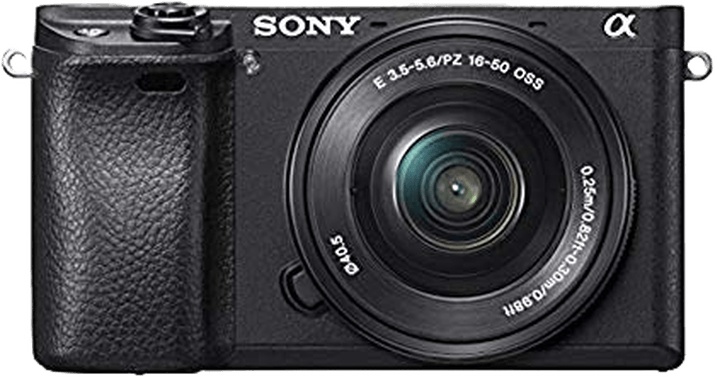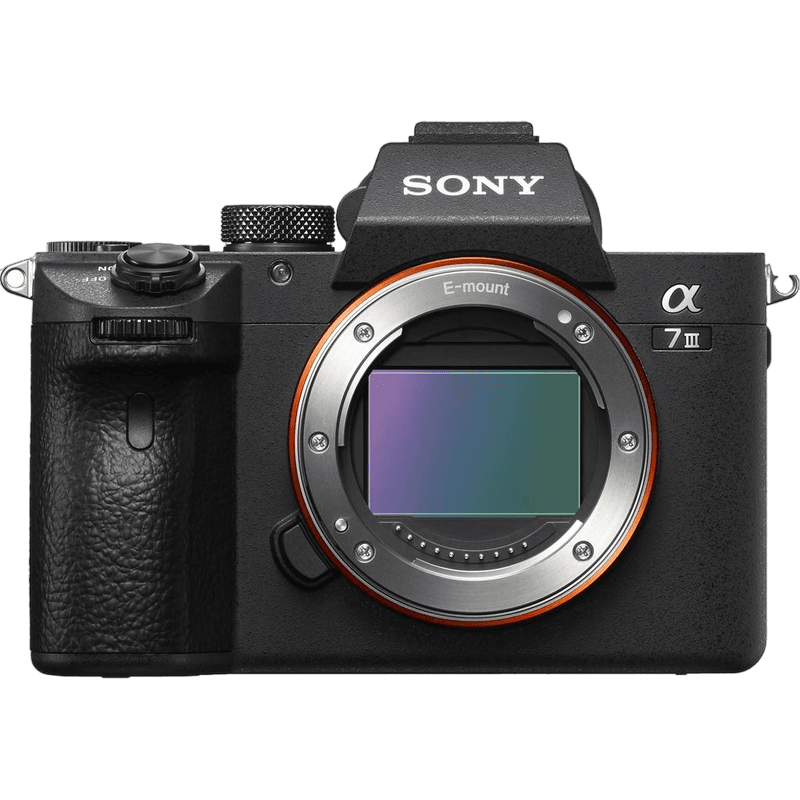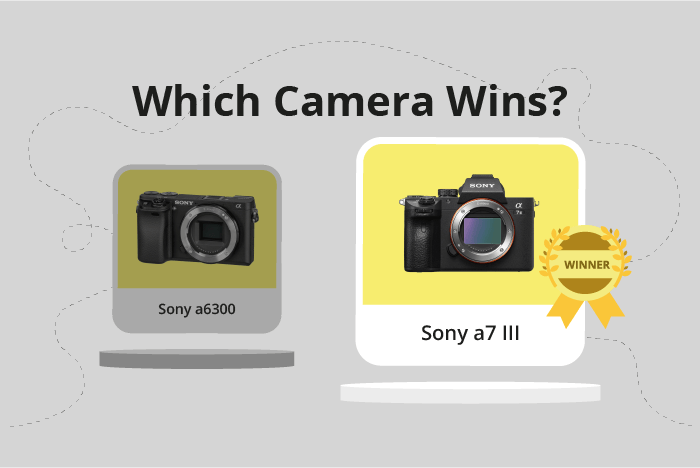Sony a6300 vs a7 III Comparison
Sony a6300

Sony a7 III

The Sony a7 III emerges as the winner with a score of 81, while the Sony a6300 trails behind at 61/100. Both cameras are mirrorless and were launched in 2016 and 2018, respectively. They share similarities in camera type and launch price, with the a6300 costing $1000 and the a7 III at $2000.
The Sony a7 III’s higher score reflects its superior performance and features. It is larger and heavier, measuring 127x96x74mm and weighing 650g, compared to the a6300’s 120x67x49mm and 404g. This suggests a more robust build and possibly more advanced features.
However, the Sony a6300 has its advantages, such as its smaller size and lighter weight, making it more portable and convenient for on-the-go photography. While it has a lower score, it is still a competent camera for its price range.
Taking into account the scores, specifications, and prices, the Sony a7 III is the better camera for those seeking top performance, while the Sony a6300 is a more compact and affordable option for casual photographers.
Sony a6300 vs a7 III Overview and Optics
The Sony a7 III emerges as the winner in the optics comparison with a score of 81/100, which is 13 points higher than the Sony a6300’s score of 68/100. Both cameras share some specifications, such as 24.2 megapixels, CMOS sensor type, and Bionz X processor. However, there are key differences that set the Sony a7 III apart from its competitor.
The Sony a7 III excels with a higher DXOMARK sensor score of 96 compared to the a6300’s score of 85. This higher score indicates better performance and image quality. Additionally, the a7 III has a full-frame sensor, which provides a larger surface area for capturing light, resulting in improved image quality and low-light performance. The Sony a7 III also features image stabilization, a crucial feature for capturing sharp images and smooth video footage, especially in low-light situations or when using longer focal lengths.
On the other hand, the Sony a6300 has a slightly faster shooting speed of 11 frames per second, compared to the a7 III’s 10 frames per second. This advantage may be beneficial for capturing fast-moving subjects, such as sports or wildlife photography. However, this slight edge in shooting speed does not outweigh the significant advantages offered by the a7 III’s superior sensor and image stabilization.
Both cameras use different lens mounts – the a6300 uses the Sony E mount, while the a7 III uses the Sony FE mount. The FE mount lenses are designed for full-frame cameras and offer better performance and image quality. However, E mount lenses can still be used on the a7 III, albeit with some limitations.
Considering the significant advantages in sensor performance, image stabilization, and lens compatibility, the Sony a7 III stands out as the clear winner in the optics comparison. While the a6300 has a marginal advantage in shooting speed, it does not compensate for the overall superior performance of the Sony a7 III.
Sony a6300 vs a7 III Video Performance
The Sony a6300 triumphs over the Sony a7 III in video capabilities, scoring 91/100 compared to the a7 III’s 70. Both cameras share 4K video resolution and maximum video dimensions of 3840 x 2160, making them suitable for high-quality video recording.
The a6300 outshines the a7 III with its higher maximum video frame rate of 120fps, which is quadruple the a7 III’s 30fps. This difference enables the a6300 to capture smoother slow-motion footage and provide greater flexibility in post-production. On the other hand, the a7 III does not possess any notable advantages in video capabilities over the a6300.
Sony a6300 vs a7 III Features and Benefits
The Sony a7 III outperforms the Sony a6300 with a feature score of 81/100, compared to the a6300’s 54/100. Both cameras share some specifications, including a 3-inch screen size, 921600-dot screen resolution, flip screen, lack of GPS, and WiFi connectivity.
The Sony a7 III is superior due to its touchscreen capabilities and Bluetooth integration. The touchscreen allows for more intuitive navigation and control, while Bluetooth enables seamless connections with other devices. These additional features make the a7 III more user-friendly and convenient for various shooting situations.
On the other hand, the Sony a6300 does not excel in any particular aspect compared to the a7 III. Both cameras have the same screen size, screen resolution, flip screen, lack of GPS, and WiFi connectivity. The a6300 does not have a touchscreen or Bluetooth, which puts it at a disadvantage in terms of features.
Given these comparisons, the Sony a7 III is the clear winner in terms of features. Its touchscreen and Bluetooth capabilities provide a more seamless and enjoyable experience for users. The Sony a6300, while still a capable camera, falls short in this aspect. Therefore, those looking for a camera with superior features should opt for the Sony a7 III.
Sony a6300 vs a7 III Storage and Battery
The Sony a7 III outperforms the Sony a6300 in storage and battery, scoring 81 points compared to the a6300’s 24 points. Both cameras share compatibility with SD, SDHC, and SDXC memory cards. However, the a7 III has an advantage with two memory card slots and support for Memory Stick Duo, Pro Duo, and Pro-HG Duo cards.
The a7 III also boasts a longer battery life, offering 750 shots per charge compared to the a6300’s 400 shots. The a7 III utilizes the NP-FZ100 battery type, while the a6300 uses the NP-FW50.
While the a6300 lags in storage and battery performance, its single memory card slot and shorter battery life may suffice for casual photographers. Nonetheless, the a7 III’s superior storage options and extended battery life make it a more suitable choice for professional use or prolonged shooting sessions.
Sony a6300 vs a7 III – Our Verdict
Are you still undecided about which camera is right for you? Have a look at these popular comparisons that feature the Sony a6300 or the Sony a7 III:

